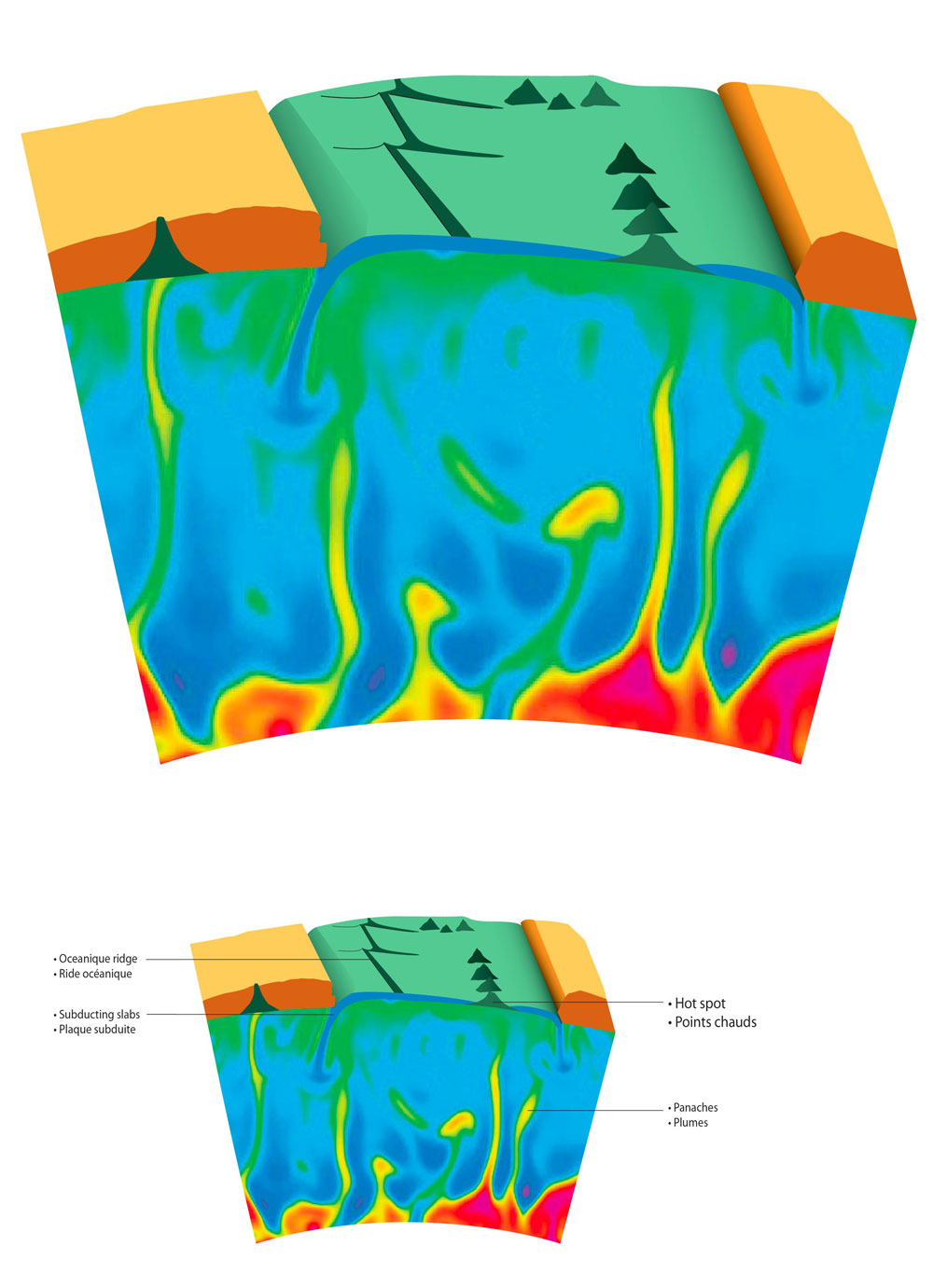Shell Game: Earth's Wandering Outer Layers Mystify


The entire outermost part of Earth may be wandering over the planet's whirling molten core, new research suggests.
Knowing whether the Earth's outer layers are roaming in this manner is key to understanding the big picture of how the planet's surface is evolving overall, scientists added.
At various times in Earth's history, the planet's solid exterior — its crust and mantle layers — has apparently drifted over the planet's spinning core. To picture this, imagine that a peach's flesh somehow became detached from a peach's pit and was free to move about over it.
This movement of the Earth's outer layers is known as "true polar wander." It differs from the motion of the individual tectonic plates making up Earth's crust, known as tectonic drift, or the motions of Earth's magnetic pole, called apparent polar wander.
'Hot spot' landmarks
Past research suggested the Earth experienced true polar wander during the early Cretaceous period that lasted from 100 million to 120 million years ago. Determining when, in which direction and at what rate true polar wander is taking place depends on having stable landmarks against which one can observe the motion of Earth's outer shell, much like one can tell a cloud is moving by seeing if its position has changed relative to its surroundings.
Volcanic "hot spots," or areas of recurrent volcanism, are one potential landmark. Geologists have suggested these are created by mantle plumes, giant jets of hot rock buoying straight upward from near the Earth's core. Mantle plumes are thought to create long island chains such as the Hawaiian Islands as they sear tectonic plates drifting overhead.
Get the world’s most fascinating discoveries delivered straight to your inbox.
Scientists have treated hot spots as stationary features for decades. The idea was that material surrounding the mantle plumes roil about to form structures known as convection cells that kept the plumes straight and fixed in place. [50 Amazing Volcano Facts]
Later on, however, researchers began suggesting that mantle plumes could move about slightly, caught as they are in the flowing mantle layer under the crust. "From this point of view, the plumes are expected to move, bend and get distorted by the 'mantle wind,' resulting in hot spot drift over geologic time," said researcher Pavel Doubrovine, a geophysicist at the University of Oslo in Norway.
By allowing hot spot positions to meander slowly, Doubrovine and his colleagues have devised computer simulations that better match observations of the chains of islands created by each hot spot.
"Estimating hot spot drift in the geological past is not a trivial task," Doubrovine told OurAmazingPlanet. "It requires substantial modeling efforts."
The scientists then compared the way the Earth's outermost layers drifted in relation to the planet's axis of spin. The Earth's magnetic field is aligned with the core's axis of rotation, and researchers can tell how Earth's magnetic field was oriented in the past by analyzing ancient rock. Magnetic minerals in molten rock can behave like compasses, aligning with Earth's magnetic field lines, an orientation that gets frozen in place once the rock solidifies.
Current wandering
Using their simulations and the magnetic field rock record, the scientists identified three new potential instances of true polar wander over the past 90 million years. These include two cases in which the Earth's solid outermost layers traveled back and forth by nearly 9 degrees off Earth's axis of spin from 40 million to 90 million years ago. Moreover, the researchers suggest that Earth's outer shell has been undergoing true polar wander for the past 40 million years, slowly rotating at a rate of 0.2 degrees every million years.
Researchers suspect true polar wander is caused by shifting of matter within the mantle, due, for instance, to variations in temperature and composition. However, "we don't know yet what specific tectonic events may have triggered the specific episodes of true polar wander that we identified," Doubrovine said.
These new details regardingtrue polar wander could help shed light on what triggers it. In the future, the researchers plan to look even further in the past at how the planet's outermost layers have changed. Doubrovine and his colleagues Bernhard Steinberger and Trond Torsvik detailed their findings online Sept. 11 in the Journal of Geophysical Research — Solid Earth.
This story was provided by OurAmazingPlanet, a sister site to LiveScience.



